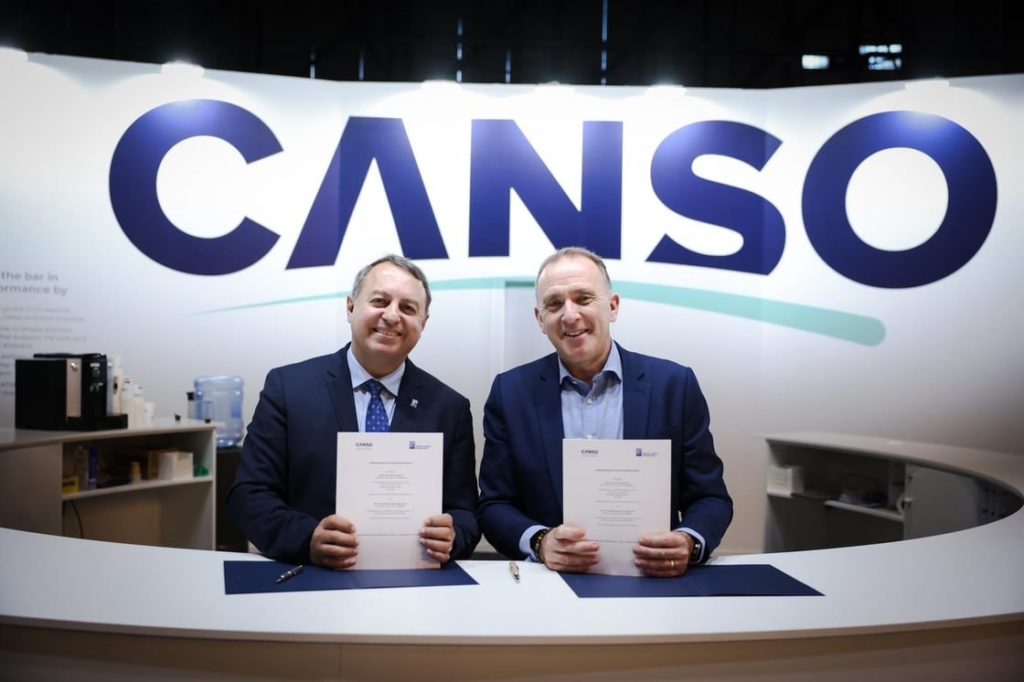ACI World and CANSO sign a Memorandum of Understanding
Airports Council International (ACI) World and the Civil Air Navigation Services Organisation (CANSO) have today announced the development of the Airport System Capacity Enhancement (ASCE) programme aimed at removing the barriers to unlocking airport capacity and supporting the sustainable growth of air travel demand.

The ASCE program is one of the core areas of cooperation to come from a new Memorandum of Understanding (MoU) signed today at Airspace World by the Directors General of ACI World and CANSO, representing airport operators and air navigation service providers (ANSPs) respectively. The MoU will see closer levels of collaboration between both organizations to promote the safe, efficient, and sustainable development of civil aviation.
Challenges of air travel growth
According to the latest ACI World Airport Traffic Forecasts 2022–2041, total passenger traffic worldwide is predicted to grow at a compound annual growth rate (CAGR) of 7.5% from 2021–2041, to reach 19.3 billion passengers. This includes a steep recovery gradient observed in the first five years (CAGR for 2021–2026) at 19.0%. In addition, the aviation industry has committed to the ambitious long-term environmental goal of reaching net zero carbon emissions by 2050, in line with the Paris Agreement.
Accommodating the growth of air travel demand has long been a challenge for the aviation system and the future forecasts necessitate cooperation among stakeholders to ensure a safe, efficient, and sustainable air transport system for passengers.
Benefits of the Airport System Capacity Enhancement Program
The ASCE program focuses on the entire airport system and surrounding airspace as these areas can often be the most significant capacity challenges. Unlocking capacity through improved coordination, changes to procedures, and strategic investments in technology and infrastructure, can provide significant advantages.
Improvements in capacity usage can reduce delays and inefficient operations that can result in additional costs for airports, ANSPs and aircraft operators, as well as disruptions for passengers. In some cases, improvements can be made that enable the deferral of costly infrastructure or system investments and contribute to aviation’s ambitious emissions reduction goals.
How the Airport System Capacity Enhancement Program works
The ASCE program provides a comprehensive onsite review led by industry peers and experts to optimise the use of airport system capacity, both in the air and on the ground. The airports and ANSPs being reviewed benefit from an assessment tailored to their unique needs and receive expertise, practical recommendations, and targeted solutions that contribute to their long-term capacity usage and operational efficiency.
ACI and CANSO will collaborate on a pilot of the programme in order to refine and validate methodologies. An ASCE program pilot is planned to take place at Jorge Chávez International Airport, in Lima, Peru, with another one intended in the coming months. Interested parties looking to reap the benefits of the program are invited to fill in the ACI World-CANSO ASCE form.
ACI World Director General, Luis Felipe de Oliveira said: “Leveraging all the available capacity across the airport system is one of the key ways that airports and air navigation service providers can support the growth of air travel demand and the sustainability of the global aviation ecosystem. This includes the ability to meet the industry’s ambitious emissions reduction goals while sustaining economic balance by deferring or reducing the need for expensive CAPEX investments. For these reasons, ACI World is proud to be strengthening its relationship with CANSO through the MoU and the launch of the Airport System Capacity Enhancement (ASCE) Program—dedicated to optimising capacity for today and tomorrow’s passengers.”
CANSO Director General, Simon Hocquard added: “ACI and CANSO have many shared priorities and we are pleased to be working with our airport partners on this program. I believe focussing on unlocking system capacity in the airport and airspace terminal environment can deliver real benefits for the system. We need new perspectives on the management of congestion and to be looking at new ways to utilise existing infrastructure resources if we are to meet future demands.”


